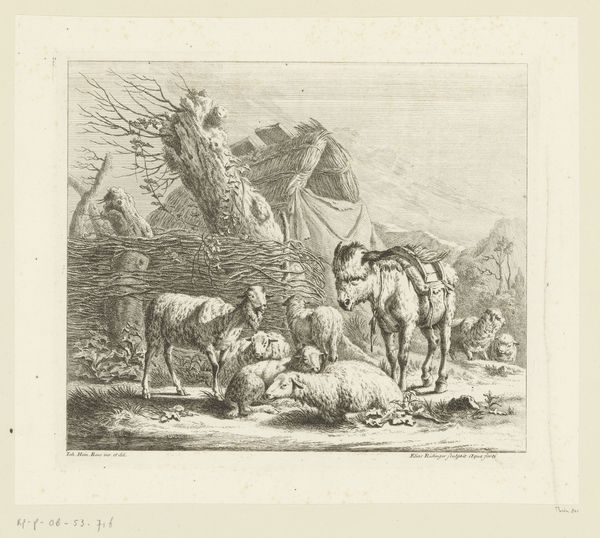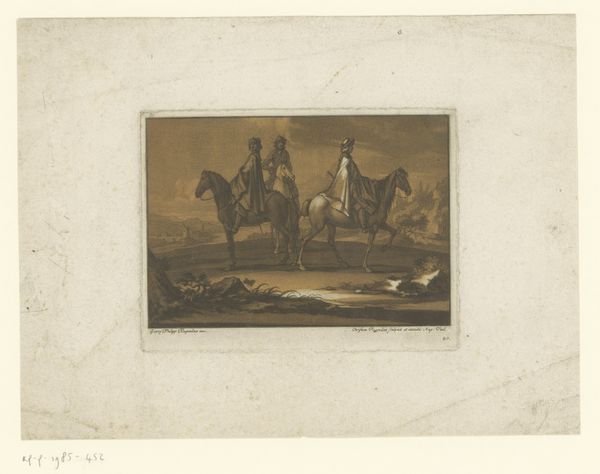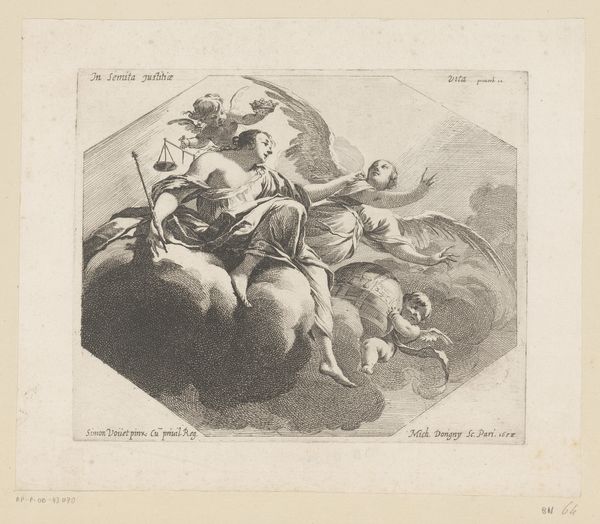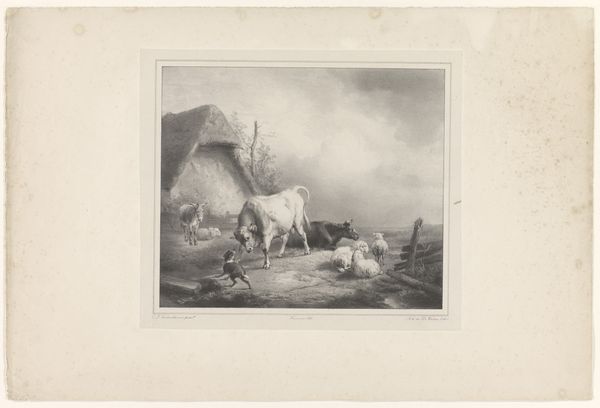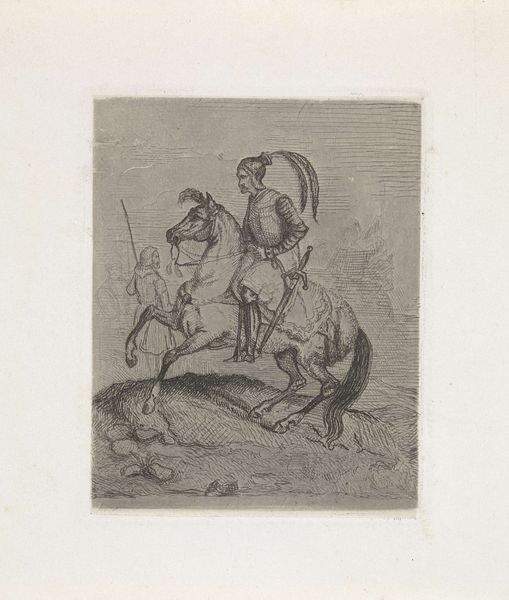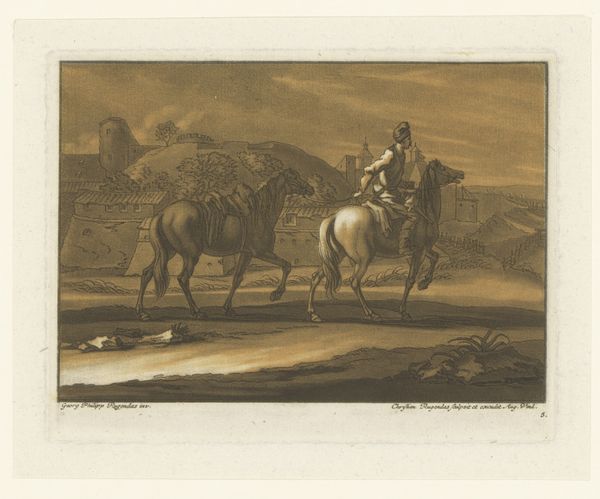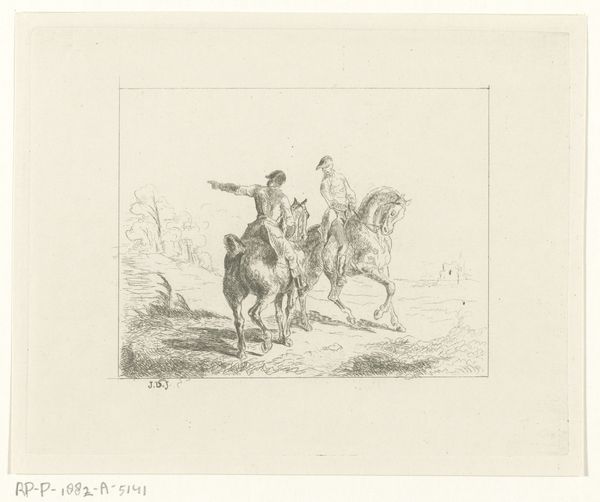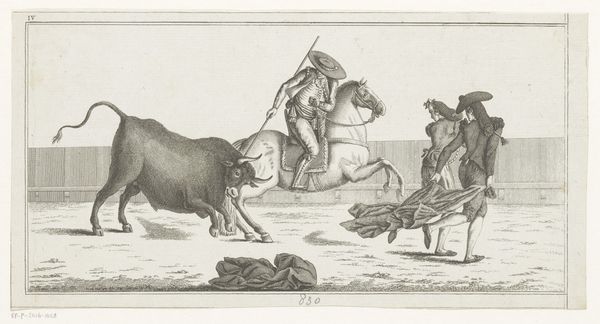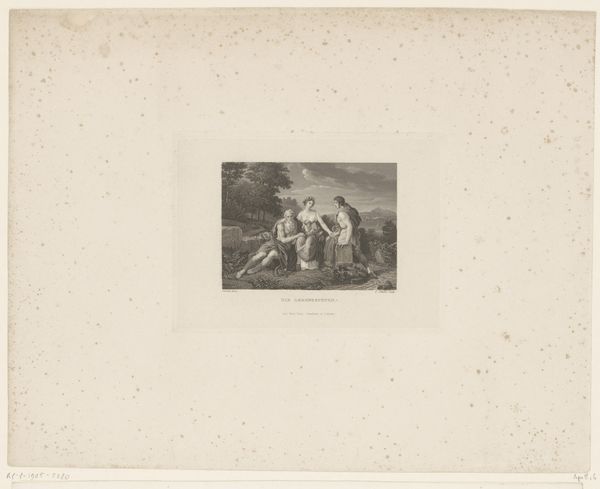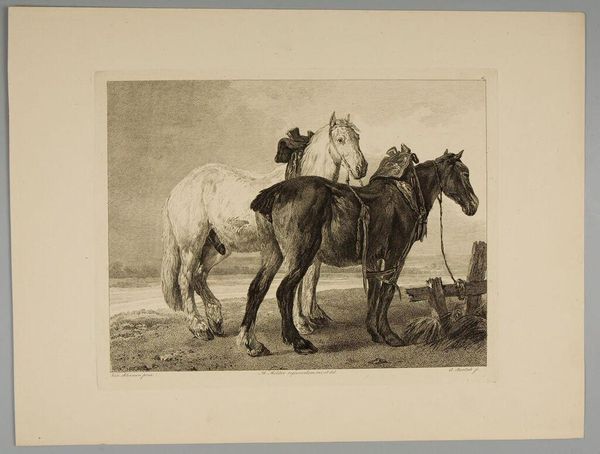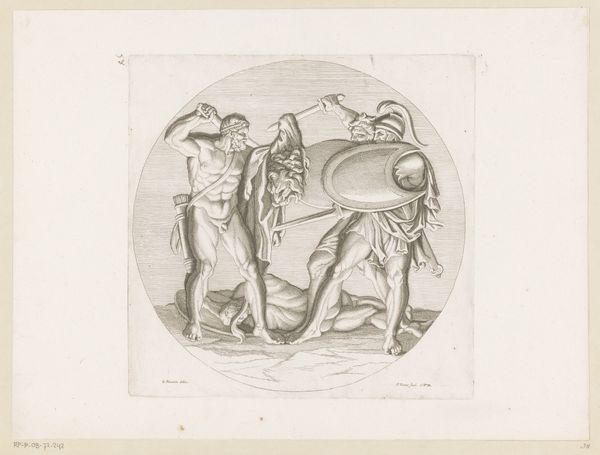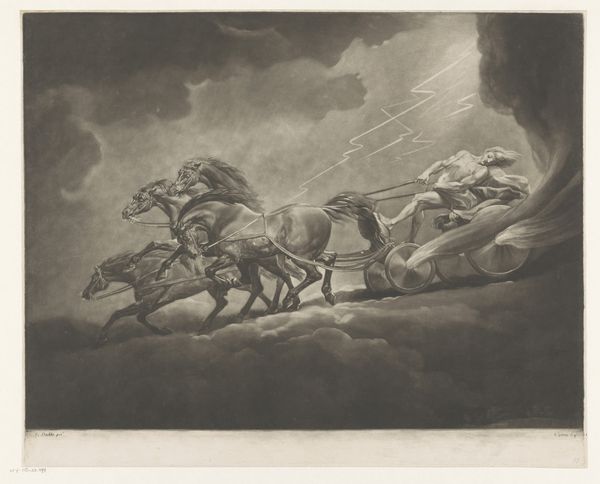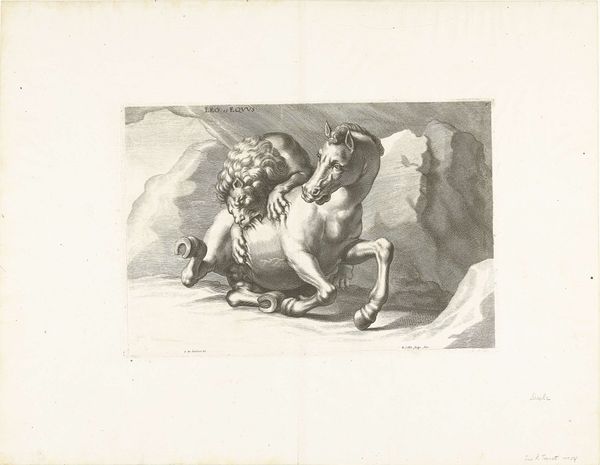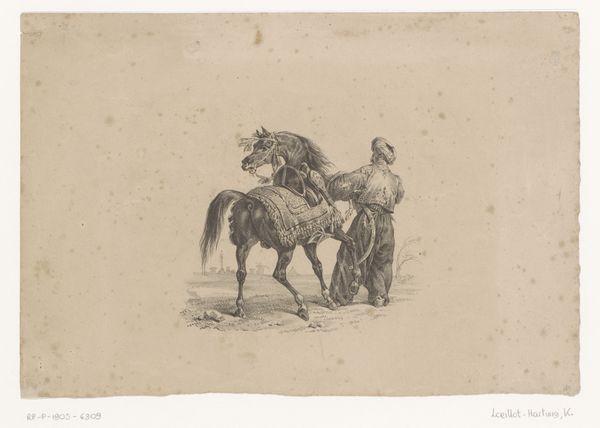
drawing, print, engraving
#
drawing
# print
#
landscape
#
figuration
#
romanticism
#
orientalism
#
horse
#
19th century
#
men
#
genre-painting
#
history-painting
#
engraving
Dimensions: Image: 10 7/16 x 8 3/16 in. (26.5 x 20.8 cm) Sheet: 13 3/8 x 9 13/16 in. (33.9 x 25 cm)
Copyright: Public Domain
Editor: Here we have Delacroix’s “A Turk Saddling His Horse,” an engraving from 1824, currently at the Met. It's quite striking. There’s an immediate sense of action and quiet anticipation. How do you read this image in terms of its historical context? Curator: This engraving really captures the fascination with the "Orient" that swept through Europe in the 19th century, often fueled by colonial ambitions and cultural projection. How do you see that manifesting in the image itself? Consider who this artwork was made for. Editor: Well, there’s the title for starters - it identifies him as a "Turk", which even in itself others the subject - then there’s the exoticizing of the clothing and the focus on horsemanship. Was there an implied power dynamic at play in such representations? Curator: Exactly. It’s critical to remember that Orientalism, as Edward Said framed it, often positioned the "East" as exotic, mysterious, and subordinate to the West. Images like this fed into that narrative, influencing public opinion and even justifying political interventions. Delacroix didn't travel to the Middle East until several years after he completed this image; so do you wonder where he might have received inspiration? Editor: It makes you think about the role of art in constructing and perpetuating stereotypes, consciously or not. What looks like a simple genre scene might be more deeply embedded in power relations than it initially seems. Curator: Precisely! The museum, by exhibiting it, also participates in this continuing dialogue of how we confront the legacy of these representations. Thinking about who funds or collects such artwork now offers insight into the ongoing institutional power structures as well. Editor: This really changes how I view seemingly straightforward historical artworks. It's not enough to appreciate the artist’s skill; we need to dissect the underlying cultural and political messages. Curator: Absolutely. It is a constant negotiation. Analyzing art through this lens encourages a much more critical and informed engagement. It asks us to acknowledge the politics embedded within even the most aesthetically pleasing images.
Comments
No comments
Be the first to comment and join the conversation on the ultimate creative platform.
